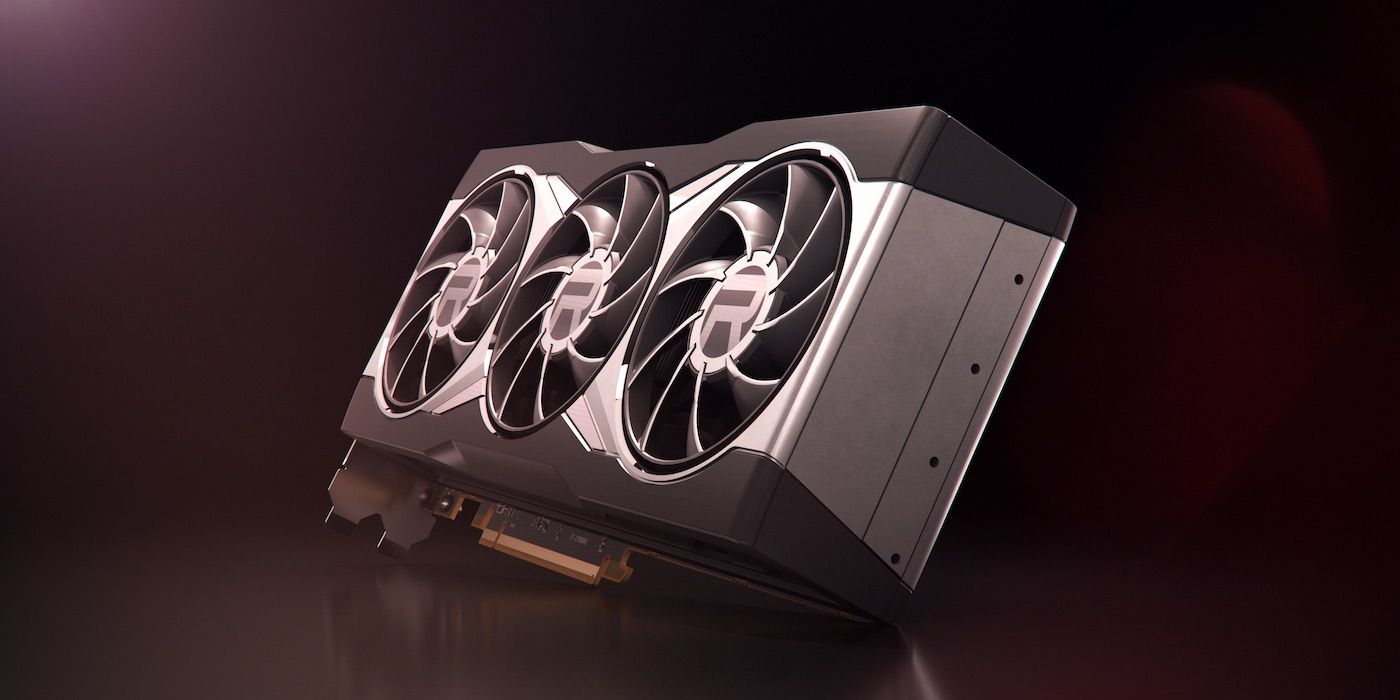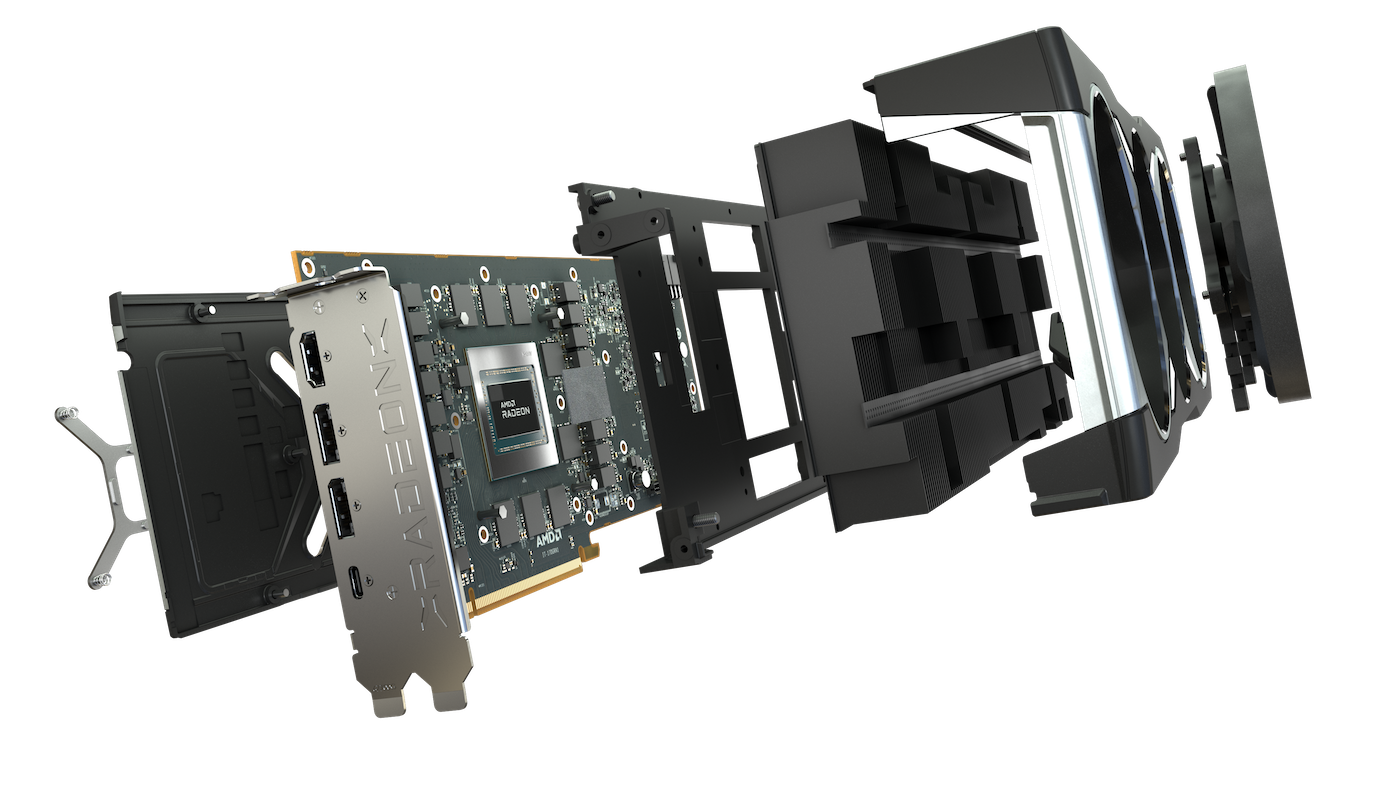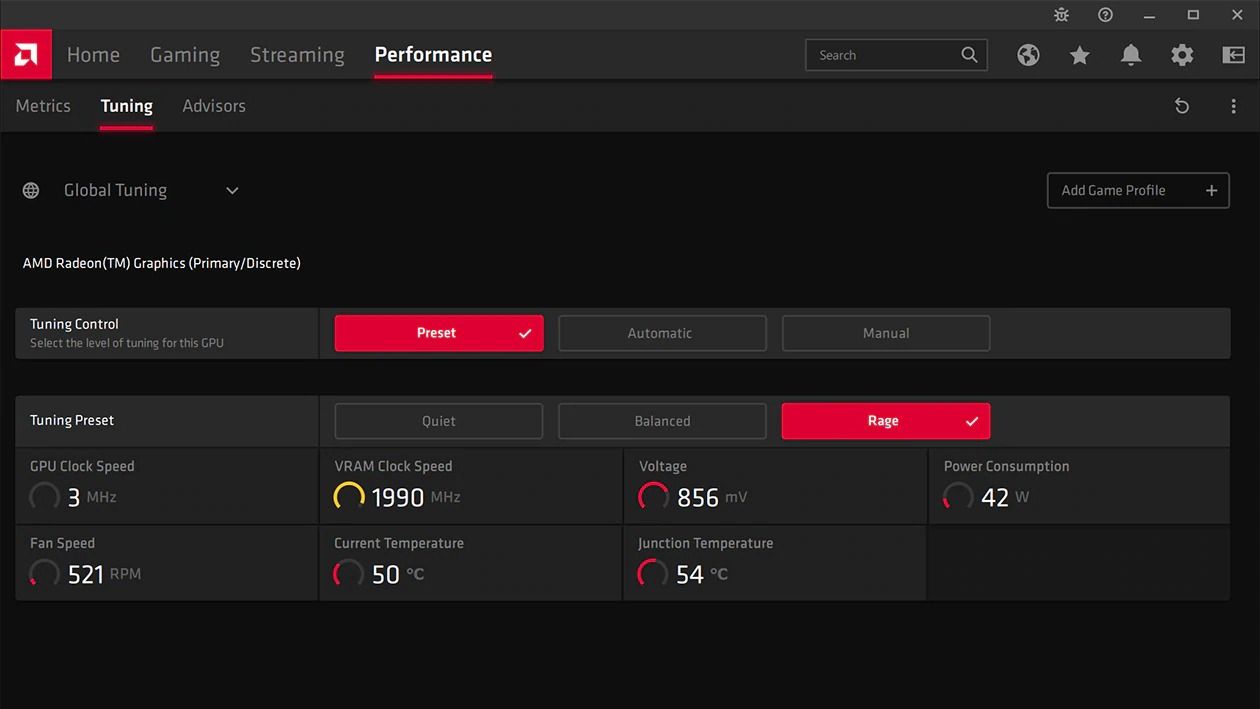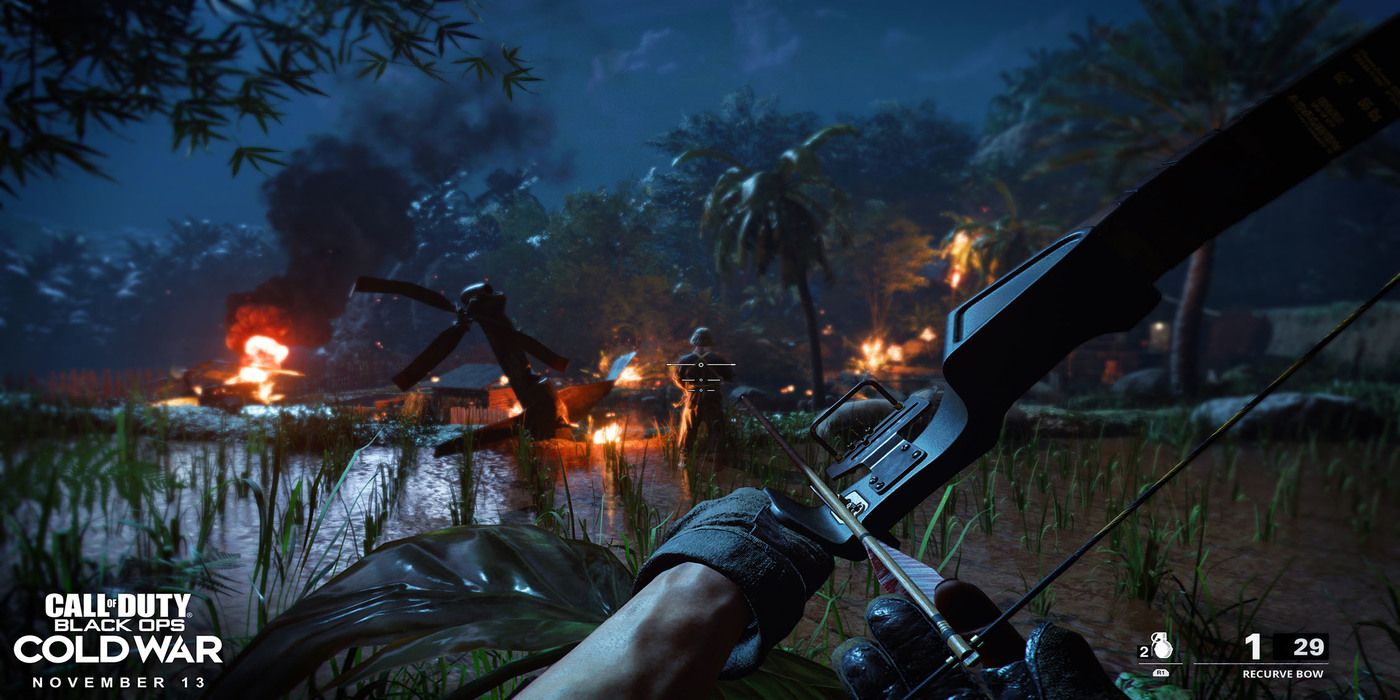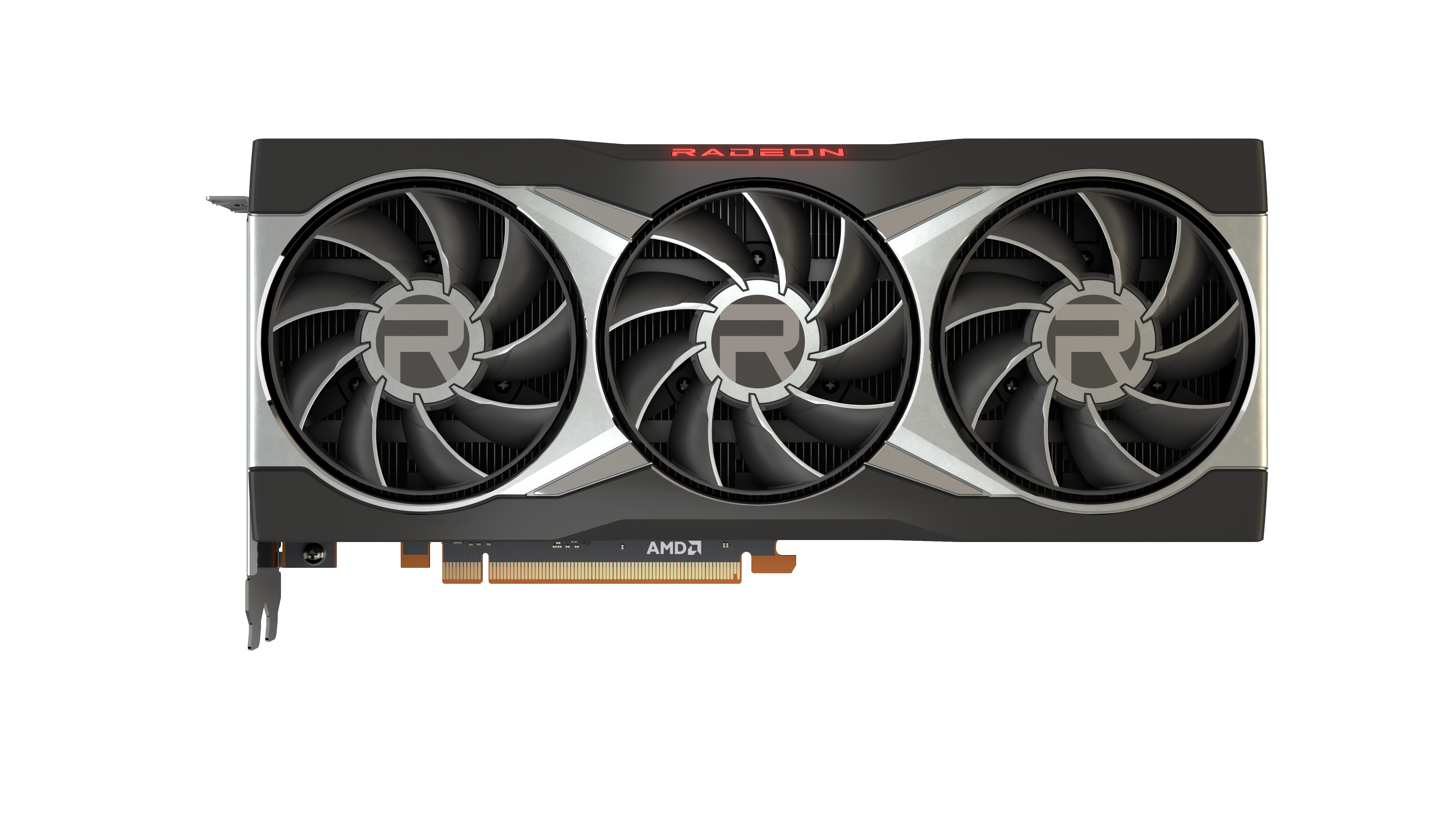It has been a big year for AMD thanks to the unveiling of its new 5000 series Ryzen CPUs, the launch of two next-gen consoles sporting AMD hardware, and most especially the release of the Radeon RX 6000 series GPUs. Both the 6800 and 6800XT are meant to be AMD's flagship, consumer-focused GPUs, but this time around there are no caveats. AMD is focused on competing when it comes to PC gaming, not giving value or favoring unique technologies – outright delivering.
We have been using the Radeon 6800XT for the last month or so and have put the new GPU through a lot of different games, from new releases to old standards in PC gaming. It's no secret that AMD has set its sights on Nvidia and the 3080 GPU, from value to power to performance. In the end, there is no clear winner when comparing the two graphics cards, but the fact that the comparisons are so close is enough to suggest a monumental shift is happening within PC gaming.
AMD Radeon RX 6800XT Specs and Design
Power: 300W
Memory: 16GB GDDR6
Base Clock: 1825 MHz
Boost Clock: 2250 MHz
AMD has opted for the triple fan cooling design this time around, with some minimal RGB on the Radeon logo. It’s nothing ostentatious but is just enough to give the card some personality. That being said, the card’s design shouldn’t be a main selling point; it’s clear that AMD went for function over form wherever possible.
There are four ports on the 6800XT, two DisplayPort, one HDMI, and a USB-C for output. Depending on a gamer’s setup, the tradeoff of a third DP for the less ubiquitous USB-C might be a concern, but that gets into triple monitor territory. For the average gamer’s needs, the GPU delivers almost everything. The one point to note is that the HDMI port does not appear to be 2.1, so those who want to game at 4K120 on a TV might want to wait for an update or a potential refresh.
Installation is as painless as it should be when it comes to a new GPU since the AMD 6800XT doesn’t require any special connectors or additional considerations. Pop the card into the PCIe slot and attach two 8-pin connectors and the card is ready to roll once the appropriate drivers have been downloaded. It’s a pretty sizable card, though, so some users may need to swap some other PCIe devices to clear room.
Noise and Thermals
The size and triple-fan design of the Radeon 6800XT are all in service of delivering high-performance gaming at appropriate thermal levels. When it comes to factors like temperature and noise, the 6800XT is at the top of the class. It can stay relatively cool at a low fan speed, ensuring that the dB levels don’t breach too far beyond the confines of the PC gaming case.
Even on the most demanding games, the GPU was almost impossible to hear within the case, and the thermal performance stayed within the low 70° C range. There are options with the Radeon software to set more aggressive curves to run the card at lower temps, or even to keep the fans as silent as possible, but right out the box, the Radeon 6800XT meets all the initial impression benchmarks. It’s quiet and cool, relatively speaking.
Radeon Adrenalin Software
Radeon's Software is as simple or as complex as gamers want it to be, and it's all in service of getting the most out of the card. Out of the box, on the Balanced preset, players will see top tier performance in terms of gameplay, noise, and thermals. However, if they want to underclock or undervolt the GPU to save some power, that is only a button press away.
Of course, Radeon's software also allows for fine-tuning the 6800XT to get settings just right. Setting a more aggressive fan curve can keep the card cooler during more demanding gaming sessions, or there are options to set minimum and maximum clock speeds. It's all very simple to use if you're just looking for a specific goal, or it can be advanced for those who like to dig into individual sliders.
AMD's New Rage Mode
One of the key features of the new AMD 6000 series cards is a setting called Rage mode that is basically overclocking made easy. Hit the Rage preset, and the Radeon software will try to squeeze as much performance out of the card without any concern for damaging it. Usually, the boost clock gets up to around 2400 MHz with the mode turned on.
Whether or not turning on Rage Mode is worth it depends on the game. Typically we saw anywhere from a 5-10 FPS increase in performance with Rage Mode on, but it was never significant enough to make a huge difference. There were no cases where a game was under 60FPS and Rage mode took it over the hump. The Radeon 6800XT is plenty powerful that any game should run at 60FPS at any resolution, assuming it is properly optimized. Still, it's nice to have a very simple “overclock” option available to those more novice PC gamers.
Rage Mode is one of the few buzz words that AMD has introduced for this gen, but it seems in service of the average user. The boost is not significant to the point that those who don’t use Rage mode will be missing out, and it’s also not a risk of damaging the card either. It’s a setting that is there for those who want to squeeze a few more FPS out of their games, but don’t want to do anything more than toggle a setting in some software.
Smart Access Memory
Those PC gamers who have gone all-in on the AMD ecosystem will get the most benefit out of the Radeon 6000 series thanks to a feature called Smart Access Memory. There's a lot of technological jargon to explain what SAM is and does, but in the basic sense it leverages the power of the Ryzen CPU to clear up any potential bottlenecks that might exist when communicating with the GPU.
Over the past few years, Ryzen CPUs have been the popular choice when it comes to multi-tasking, streaming, or content creation. The higher core and thread count allow for completing discrete tasks faster and making the experience snappier. But for gaming, the advantages were never present and in many cases Intel was seen as the better choice. Now with the Ryzen 4th gen porcessors and these Radeon 6000 GPUs, the compatibility can make a difference.
6800XT Gaming Performance
There's so much to say about how impressive the AMD Radeon 6800XT is, but a lot of it stems from gaming performance, plain and simple. Great thermals is always a plus, and the card is fairly quiet, but most will just be looking for a GPU that works as advertised. In all of our testing of the card and comparing it to our experience with the competition, the AMD Radeon 6800XT was able to meet or exceed expectations at almost every turn. There are definitely some areas where AMD is lagging behind, but that's a byproduct of gaming technology and not necessarily a fault of the GPU. Some of those deficiencies will even be eliminated over time, according to AMD.
Whether it was an old stand-by like Destiny 2 or brand new games like Godfall or Call of Duty: Black Ops Cold War, the AMD 6800XT ran every game at 1080p or 1440p much higher than 60FPS and rock stable. Destiny 2, for example, averaged 110FPS at 1440p on the highest settings, even with the new graphics engine overhaul and some noted PC performance issues in the latest build. Call of Duty ran at a buttery smooth 144FPS (the max of our monitor for testing) at the highest settings, and with some tweaking to the options, could hit 60FPS with Ray Tracing turned on. For comparison's sake, a comparable Nvidia card ran Assassin's Creed Valhalla on max settings at around 85FPS and the Radeon 6800XT typically hit the same, and occasionally bumped a little higher.
Swapping out a competing card for an AMD GPU has never been easier and it felt more like a gain overall. Nvidia's cards (depending on manufacturer) can tend to run hotter than the Radeon 6800XT and with a higher fan speed. AMD's GPU could run at 100% load for several hours and not get above around 75° C in a case with moderate airflow. Even if the 6800XT was slightly below the competition, its price point of $650 would still make it well worth the investment, but seeing it hit comparable or even better numbers is extremely impressive.
For those that simply want to know if a 3080 and a 6800XT are comparable, the answer is yes. There is plenty of nuance to that answer that accounts for some technology, specs, and individual games, but when just looking at the FPS of game A on the 3080 and game A on the 6800XT, the numbers were so close it was almost negligible. Some games perform a little better on one versus the other, but it was usually less than a 5 FPS difference.
Ray Tracing and 4K Gaming
Ray-tracing performance is where the AMD Radeon 6800XT lags the furthest behind its competitors. Without the uplift that comes from DLSS (Deep Learning Super Sampling), the AMD GPU struggles to deliver a consistent experience. Regardless of if it was Control, Call of Duty: Black Ops Cold War, Watch Dogs Legion (an admittedly poorly optimized game), or Ghostrunner, the difference between the AMD 6800XT and its Nvidia competition is clear. At 1440p, the AMD 6800XT can still hit or get close to hitting 60fps with Ray Tracing on a few of these titles, but its competitors can scale much higher. Because Ray Tracing comes in many different forms, there are some areas where AMD can get close to Nvidia and others where it lags far behind. If the game uses Path Tracing, for example, the RX 6800 XT can get closer to the Nvidia GPUs.
With this being AMD’s first foray into the world of Ray Tracing, it was expected that this might be the sector where the 6000 series GPUs lag the most behind. Still, the initial support for Ray Tracing should be exciting to those who have remained within the AMD ecosystem. It’s also worth mentioning that AMD is working on a solution similar to DLSS that should boost performance with Ray Tracing on. At present, though, this is an area where the 6800XT truly is behind its competition.
Gaming in 4K can also put the 6800XT a bit behind some of the competition, but not significantly. Players are still likely to get 60FPS on brand new games like Assassin's Creed Valhalla or Call of Duty: Black Ops Cold War (RTX turned off) at the highest settings, but the results can vary from game to game. 4K is somewhat uncharted territory when it comes to PC gaming and consoles are only just starting to dip into the native resolution. So it may be more of an optimization issue than a hardware issue at present. Once more developers are able to account for AMD's GPU, they likely will be able to achieve parity when it comes to 4K gaming.
Final Impressions
Outside of games that feature Ray Tracing and higher resolution gaming, the AMD 6800XT feels neck and neck with its competition, namely the Nvidia 3080. At a slightly lower price point of $650, the 6800XT offers greater value for comparable performance. Every game is bound to be different because of technology, but when it came to stability of experience, temperature, and noise, it was hard not to be impressed by the GPU.
In almost every test at 1080p or 1440p, the AMD 6800XT either trailed slightly behind, matched, or slightly exceeded the 3080. For AMD fans this is great news because it puts AMD in lockstep with Nvidia and it offers more options. At a time when getting one’s hands onto a new GPU is very difficult, being able to know that either the 3000 series at Nvidia or the 6000 series from AMD will do the job is great news.
More consistent thermal performance and ease of use when it comes to boost frequency make the AMD 6800XT a gaming powerhouse and a GPU that should not be overlooked. Switching between GPU manufacturers no longer has a stigma surrounding it and that’s a huge win for gamers.
The AMD Radeon 6800XT is available now for $650. Game Rant was provided a unit for this review.

